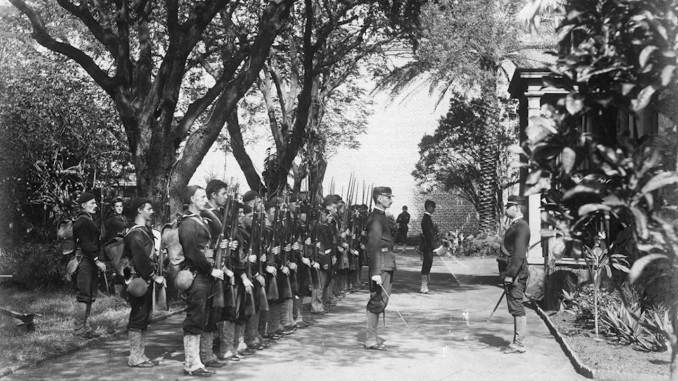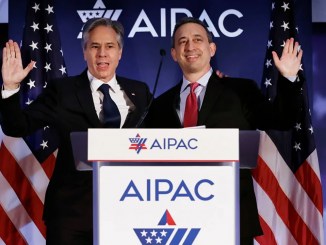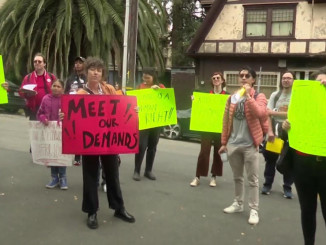
The United States was an expansionist nation from its very beginning. Whether taking lands from indigenous Americans along the east coast, purchasing the Louisiana Territory from France, spreading into the southeast Gulf States with slaves and cotton, bringing slaves illegally into Mexico, or instigating wars with Mexico to create the slave state of Texas, settlers of European descent have always moved westward in search of new land and resources to exploit. As the 19th century proceeded, the need for more material resources for profit-driven businesses combined with the ideologies of Manifest Destiny and white supremacy to drive these settlers westward to the Pacific coast.
But it was only in the 1890s that the United States joined other world powers, like England, the Netherlands, and France, in becoming an imperialist power. In these years, the United States and other imperialist nations were driven to expand outward by the immense productive powers of industrial capitalism, which needed huge amounts of raw materials as well as new markets for its manufactured goods.
On January 17, 1893, the United States began its history of overseas imperialist expansion with the overthrow of the indigenous ruler of Hawaii.
By the 1830s, people from the U.S. had begun settling in Hawaii, some as Christian missionaries, and some as owners of plantations that produced sugar for export back to the United States. As these sugar plantations expanded and became more profitable, the owners worked to increase their political influence over the indigenous monarch and legislature of Hawaii. They were allowed to profit from Hawaiian land with low taxes, little regulation over how they treated their workers, and little limit on how much land they could use. In the 1880s, they actually forced the king to sign a constitution which disenfranchised many native Hawaiians while allowing foreign plantation owners and other big landowners to dominate the legislature. By 1875, planters from the U.S. controlled about 75% of all farmable land on the islands. They had a great bargain, and profited tremendously from their Hawaiian plantations and other businesses.
But after 1890 two obstacles stood in the way of maximizing their profits: the first was an 1890 tariff that the United States imposed on all foreign sugar imported into the U.S., and the second was a new queen in Hawaii who wanted to implement a new constitution that would reverse the political dominance of the U.S. planters. This was Queen Liliʻuokalani, who took power after the death of her brother the king in 1891.
Confronted with these two obstacles, the sugar planters decided that they needed to get rid of the new queen and to allow the islands to be annexed by the United States in order to eliminate their need to pay the costly tariff to sell their sugar in the U.S. mainland. This was not a new idea. Some had hoped for that possibility for decades, but only now felt that it was necessary to maintain their profits and political power in the islands.
Many U.S. political theorists, most famously a Naval War College historian named Alfred Thayer Mahan, also thought that Hawaii should become part of the United States, although for larger geopolitical reasons. Mahan, in his book, The Influence of Sea Power Upon History, argued that the key to world dominance was naval power. He urged the United States to build a modern, steel-hulled navy, which the U.S. Navy was just beginning to do in 1890. He also believed that in order to have a dominant navy, the U.S. needed naval bases and coaling stations for long distance voyages. The Hawaiian Islands, nearly in the middle of the Pacific Ocean, were the perfect location for this purpose. And finally, Mahan and other influential U.S. political leaders viewed Asia – specifically China – as the great market that would purchase manufactured goods from the U.S. for decades to come. The Hawaiian Islands, then, were the U.S. stepping stone to Asia and the Philippines (which Mahan also urged taking) were the “Gateway to China.” U.S. capitalism needed markets and, to get to those markets, it needed military bases and coaling stations around the globe. The interests of the U.S. sugar planters in Hawaii dovetailed nicely with the needs of the larger capitalist class in the U.S., and the overthrow of Queen Lili’uokalani was on the table.
In the days leading up to January 17, 1893, the sugar planters armed a few hundred of their followers, and the U.S. Minister to Hawaii asked U.S. Marines and sailors to come ashore. The few hundred troops who came ashore took up positions in prominent public locations, and had the effect of intimidating supporters of the queen. The queen, without a large or modern military to fight off the aggressors, and with only a small guard for herself, was forced to step down. The U.S. invaders immediately created a Provisional Government and appointed Sanford Dole as their Provisional President. Although President Grover Cleveland initially refused to annex the islands, his successor, William McKinley did, making Hawaii a so-called territory of the United States in 1898. This gave the planter class near total control of Hawaii’s political structure and the ability to sell their sugar into the U.S. mainland free from tariffs. It also made the islands an integral part of the developing U.S. economic and military network in the Pacific Ocean.
The overthrow of the indigenous Hawaiian leadership and the taking of political, economic and military power by U.S. capitalists and government is the first example of U.S. imperialism outside of continental North America. But it would not be the last. As U.S. capitalism grew and became more productive and more profitable, imperialist actions would increase in frequency throughout the 1890s and into the 20th century. After taking control of Hawaii, the United States took Cuba, Puerto Rico, Guam and the Philippines during the war between the U.S. and Spain for control of those island nations. In the early 20th century, the United States took control of the Darien region of Colombia, creating the nation of Panama in 1901 to facilitate the building of the Panama Canal. And throughout the 20th and into the 21st centuries, the United States has used its military power in the Caribbean and elsewhere in the Western hemisphere, eventually extending its imperial muscle into Asia, Africa, the Middle East, and all over the world, overthrowing at least 14 separate governments along the way.
So the people of the Hawaiian Islands were the first overseas victims of what became the biggest imperial power in history, the United States.




